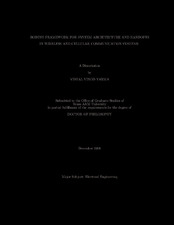| dc.description.abstract | Robustness of a system has been defined in various ways and a lot of work has
been done to model the robustness of a system, but quantifying or measuring robustness has always been very difficult. In this research, we develop a framework for
robust system architecture. We consider a system of a linear estimator (multiple tap
filter) and then attempt to model the system performance and robustness in a graphical manner, which admits an analysis using the differential geometric concepts. We
compare two different perturbation models, namely the gradient with biased perturbations (sub-optimal model) of a surface and the gradient with unbiased perturbations
(optimal model), and observe the values to see which of them can alternately be used
in the process of understanding or measuring robustness. In this process we have
worked on different examples and conducted many simulations to find if there is any
consistency in the two models. We propose the study of robustness measures for
estimation/prediction in stationary and non-stationary environment using differential geometric tools in conjunction with probability density analysis. Our approach
shows that the gradient can be viewed as a random variable and therefore used to
generate probability densities, allowing one to draw conclusions regarding the robust-
ness. As an example, one can apply the geometric methodology to the prediction
of time varying deterministic data in imperfectly known non-stationary distribution. We also compare stationary to non-stationary distribution and prove that robustness
is reduced by admitting residual non-stationarity.
We then research and develop a robust iterative handoff algorithm, relating generally to methods, devices and systems for reselecting and then handing over a mobile
communications device from a first cell to a second cell in a cellular wireless communications system (GPRS, W-CDMA or OFDMA). This algorithm results in significant
decrease in amount of power and/or result is a decrease of break in communications
during an established voice call or other connection, in the field, thereby outperforming prior art. | en |


